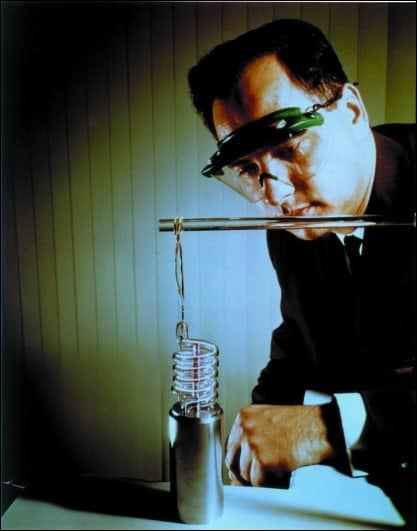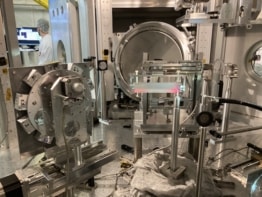Theodore Maiman, who built the first working laser, passed away on 5 May aged 79. Maiman made his breakthrough in 1960 by generating pulses of coherent light from a fingertip-sized lump of ruby illuminated by a flash lamp. In doing so he beat a number of other physicists to the post, including Charles Townes, who had earlier developed the maser, the microwave forerunner of the laser. However, Maiman struggled to gain recognition for his achievement and it was Townes who went on to win the Nobel prize.

1927–2007
Maiman was born in Los Angeles, California, on 11 July 1927. After supporting himself in college by repairing radios and other electrical appliances, and then serving in the Navy, Maiman earned a degree in engineering physics from the University of Colorado in 1949. He then went on to Stanford University in California where he completed a masters degree in electrical engineering and a PhD in physics under the guidance of soon-to-be Nobel-prize winner Willis Lamb.
Maiman received his doctorate in 1955, two years after Townes had built the first maser at Columbia University in New York. Townes then attempted to develop an optical equivalent of the maser with his brother-in-law Arthur Schawlow at Bell Labs in New Jersey. Townes and Schawlow, however, were primarily interested in developing the laser for spectroscopic studies and therefore attempted to build a continuous – rather than a pulsed – device, which meant they could not use ruby as the lasing medium.
Maiman’s breakthrough occurred after he had joined Hughes Research Laboratories, the Californian aerospace company owned by eccentric billionaire Howard Hughes. Maiman’s initial assignment at the company was to build a much slimmed-down version of Townes’ device, which he did in the form of a ruby maser weighing just 2 kg. Then, on 16 May, 1960, he succeeded in generating a laser beam from a ruby rod that he had fitted into a coiled flash lamp placed inside an aluminium cylinder. He had initially attempted to illuminate the ruby using a movie projector lamp but switched to a photographic flash on the suggestion of his student assistant Charles Asawa.
Following his demonstration, Maiman submitted a paper to Physical Review Letters (PRL), but the then-editor Sam Goudsmit rejected it on the basis that it was just the latest in a long line of articles on masers. Maiman did succeed in publishing a brief version of the paper in Nature but it was Townes and colleagues at Bell Labs who became known as the inventors of the laser after they published a paper about their own, subsequently constructed, ruby laser in PRL. Indeed, Townes went on to share the 1964 Nobel Prize in Physics, having been awarded a patent in 1960 for his proposal of the laser with Schawlow two years’ earlier.
Although the primacy of Maiman’s achievement is now widely acknowledged he struggled for many years to gain recognition (inventor Gordon Gould also fought to have his role in the development of the laser acknowledged). Within a year of his ground-breaking work, Maiman left Hughes to set up his own laser manufacturing company, Korad Corporation. After selling Korad to Union Carbide he joined the aerospace company TRW in 1976. In later life, Maiman did receive belated recognition for his development of the laser, including the Wolf prize in 1984, the year in which he was also added to the US National Inventors Hall of Fame.


